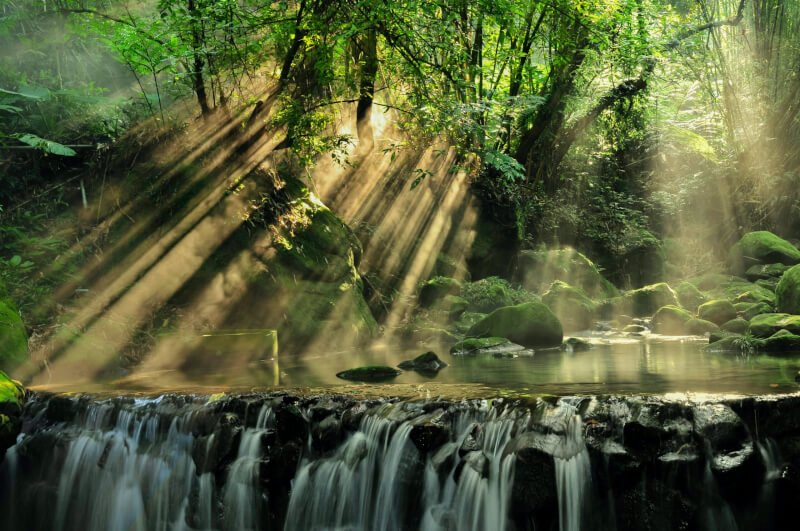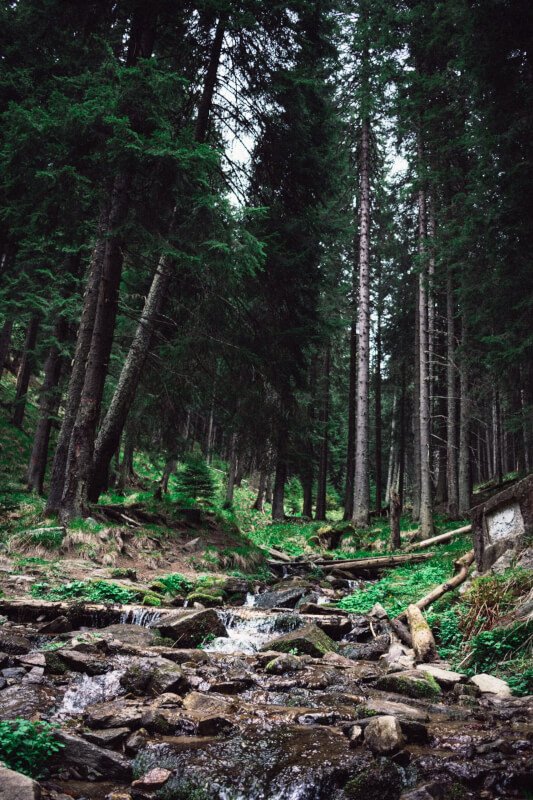Immerse yourself in the fascinating world of bushcraft with “Bushcraft 101: A Field Guide to the Art of Wilderness Survival.” This comprehensive guidebook provides invaluable tips, tricks, and techniques to help you master the art of survival in the great outdoors. From building a shelter and starting a fire to finding food and navigating through unfamiliar terrain, this book is your ultimate resource for unlocking the secrets of wilderness survival. Whether you’re an experienced adventurer or a curious beginner, “Bushcraft 101” will equip you with the essential knowledge and skills needed to thrive in the wilderness. Grab your backpack and get ready to embark on an unforgettable journey into the wild!

Chapter 1: Understanding Bushcraft
Introduction to Bushcraft
Welcome to the world of bushcraft! Bushcraft is the art and skill of living comfortably and self-sufficiently in the wilderness. It involves using the natural resources around you to meet your basic needs, such as shelter, water, fire, and food. Bushcraft is all about connecting with nature and learning to thrive in the great outdoors.
History and Origins of Bushcraft
Bushcraft has a rich history that can be traced back to our ancestors. The origins of bushcraft can be found in the traditional skills and knowledge passed down through generations of indigenous peoples around the world. These skills were necessary for survival in the wilderness and included techniques for building shelters, trapping game, and finding edible plants.
Benefits of Learning Bushcraft
Learning bushcraft has numerous benefits, both practical and personal. On a practical level, it equips you with the skills needed to survive and thrive in the wilderness. Whether you are an avid hiker, camper, or adventurer, knowing bushcraft can make your outdoor experiences safer and more enjoyable.
On a personal level, bushcraft fosters a deeper connection with nature. It allows you to tune in to the rhythms of the natural world and appreciate its beauty and resources. It also builds self-confidence and self-reliance, as you learn to rely on your own skills and resourcefulness.
Basic Principles of Bushcraft
There are a few basic principles that guide the practice of bushcraft:
- Knowledge: Bushcraft is all about acquiring and applying knowledge of the natural environment. This includes understanding the plants, animals, and terrain of the area you are in.
- Adaptability: Bushcraft teaches you to adapt to different situations and environments. It encourages you to be resourceful and find creative solutions to problems.
- Minimalism: Bushcraft emphasizes the use of minimal tools and resources. It teaches you to make the most of what nature provides, rather than relying on modern conveniences.
- Respect for Nature: Bushcraft promotes a deep respect and appreciation for the natural world. It encourages leaving no trace and practicing sustainable techniques to minimize our impact on the environment.
Chapter 2: Essential Wilderness Survival Skills
Building a Shelter
One of the first priorities in a survival situation is building a shelter. A shelter protects you from the elements and helps regulate your body temperature. In bushcraft, there are various types of shelters you can construct, depending on the materials available and the terrain.
Finding and Purifying Water
Water is essential for survival, and in the wilderness, it may not always be readily available. Bushcraft teaches you how to find water sources, such as streams and lakes, and purify the water to make it safe for consumption. Techniques like boiling, filtration, and chemical treatments can be used to ensure the water is free from harmful bacteria and parasites.
Making Fire in the Wild
Fire is not only crucial for warmth and cooking food but also for signaling for help and providing comfort. Bushcraft teaches you various methods to start a fire without relying on matches or lighters. Techniques like the bow drill, hand drill, and fire plow allow you to create fire using friction and natural materials.
Navigating without a Compass
In a survival situation, being able to navigate without a compass can be a valuable skill. Bushcraft teaches you how to use natural clues and landmarks, such as the position of the sun, the growth patterns of trees, and the direction of rivers or streams, to find your way in the wilderness. These skills not only help you stay on track but also deepen your connection to the natural world.

Chapter 3: Tools and Equipment for Bushcraft
Knife Selection and Usage
A knife is arguably the most important tool in bushcraft. It serves a multitude of purposes, from cutting materials for shelter and fire to preparing food and crafting tools. Understanding how to select the right knife for your needs and how to safely and effectively use it is essential in bushcraft.
Essential Tools for Bushcraft
In addition to a knife, there are other essential tools that are handy to have in your bushcraft kit. These include a folding saw, an axe or hatchet, a multi-tool, and a sturdy backpack. These tools help you accomplish tasks like cutting firewood, clearing pathways, and repairing gear.
Understanding and Using Cordage
Cordage, or rope, is a versatile tool in bushcraft. It can be used for building shelters, securing gear, constructing snares, and more. Knowing how to select and use different types of cordage, such as paracord or natural fibers like plant stems or tree bark, is an important skill in bushcraft.
Choosing and Using Outdoor Gear
While bushcraft emphasizes minimalism and the use of natural resources, there are times when having the right outdoor gear is essential. Understanding how to choose and effectively use gear like tents, sleeping bags, and camp stoves enhances your comfort and safety in the wilderness.
Chapter 4: Foraging and Food in the Wilderness
Identifying Edible Plants and Fungi
In bushcraft, knowing how to identify edible plants and fungi is crucial for sustaining yourself in the wilderness. Many plants and fungi offer valuable nutrients and can be foraged ethically and sustainably. Bushcraft teaches you how to identify edible species, differentiate them from toxic ones, and prepare them for consumption.
Hunting and Trapping Game
For those with the necessary skills and knowledge, hunting and trapping game can be a reliable source of food in the wilderness. Bushcraft teaches you ethical hunting and trapping techniques, as well as how to make and set traps to catch small game like rabbits or squirrels.
Fishing in Rivers and Lakes
Water bodies, such as rivers and lakes, are often teeming with fish that can provide sustenance in a survival situation. Bushcraft teaches you various fishing techniques, from using a simple hand line to constructing primitive fish traps. Knowing how to catch and prepare fish is a valuable skill in bushcraft.
Cooking and Food Preservation Techniques
Once you have procured food in the wilderness, knowing how to cook and preserve it is essential. Bushcraft teaches you various cooking techniques, such as open-fire cooking and using Dutch ovens, as well as methods for smoking or drying food for long-term preservation.

Chapter 5: Primitive Skills and Crafting
Making Survival Shelter from Natural Materials
In addition to building shelters using modern tools and materials, bushcraft also teaches you how to construct shelters using only natural materials found in the wilderness. This includes techniques like building debris shelters, lean-tos, and wickiups using branches, leaves, and other available resources.
Creating Primitive Hunting Weapons
For those interested in primitive hunting, bushcraft offers techniques for crafting hunting weapons like atlatls, bows and arrows, and slingshots. These weapons allow for quiet and efficient hunting without the need for modern firearms.
Crafting Essential Tools and Utensils
Bushcraft teaches you how to craft essential tools and utensils using natural materials. This includes making items like wooden spoons, bowls, baskets, and even primitive pottery. Crafting your own tools and utensils enhances your self-sufficiency and connection to nature.
Weaving Baskets and Containers
Weaving baskets and containers from natural materials is another valuable skill in bushcraft. These containers can be used for collecting and storing food, carrying water, and organizing gear. Weaving is a craft that connects you to ancient traditions and allows you to create functional and beautiful objects from nature.
Chapter 6: Wilderness First Aid and Emergency Preparedness
Building a First Aid Kit
Having a well-stocked first aid kit is essential for any outdoor adventure. In bushcraft, you learn how to build a first aid kit suited for wilderness situations. This kit includes essentials like bandages, antiseptics, medication, and supplies for treating more serious injuries.
Treating Common Injuries and Illnesses
Bushcraft equips you with the knowledge to treat common injuries and illnesses that can occur in the wilderness. This includes techniques for cleaning wounds, splinting broken bones, managing allergic reactions, and dealing with illnesses like food poisoning or dehydration.
Surviving Extreme Weather Conditions
In the wilderness, extreme weather conditions can pose serious risks to your safety. Bushcraft teaches you how to survive and thrive in harsh environments like extreme heat or cold, heavy rain or snow, and strong winds. Techniques for building appropriate shelter, finding sources of water, and managing body temperature are essential in these situations.
Search and Rescue Basics
While being self-sufficient is an important aspect of bushcraft, there may be times when you or others require assistance. Bushcraft teaches you the basics of search and rescue, including how to signal for help, create distress signals, and navigate to safety. These skills can be lifesaving in emergency situations.

Chapter 7: Advanced Bushcraft Techniques
Building and Using Primitive Traps
Advanced bushcraft techniques involve mastering the art of building and using primitive traps. These traps are designed to catch animals for food or fur, and they require a deeper understanding of animal behavior and tracking. Advanced traps include things like deadfall traps, snare traps, and pit traps.
Building Natural Cordage and Rope
While modern cordage is readily available, knowing how to make natural cordage from plant fibers or animal sinew is a valuable skill in advanced bushcraft. Natural cordage can be stronger and more versatile, and knowing how to craft it allows for greater self-reliance in the wilderness.
Creating Fire with Friction
Creating fire with friction is an advanced technique in bushcraft. It involves using a wooden fire drill or a bow drill to generate enough friction to create a coal that can ignite a fire. Mastering this skill requires practice and patience, but it offers a deeper connection to the fire-making techniques of our ancestors.
Advanced Navigation Techniques
Advanced navigation techniques in bushcraft go beyond using natural clues and landmarks. They include methods like using the stars and celestial bodies for navigation, understanding tides and currents for coastal navigation, and using topographic maps and compasses to navigate in more challenging terrains.
Chapter 8: Surviving in Specific Environments
Coastal Bushcraft Skills
Coastal environments present their own unique challenges and opportunities in bushcraft. Coastal bushcraft skills include understanding tides and currents, knowing how to find food sources like shellfish and seaweed, building suitable shelters, and navigating along the coastline.
Mountain Bushcraft Skills
Mountainous terrains require a different set of skills in bushcraft. Mountain bushcraft skills include understanding the effects of altitude on your body, navigating steep and rugged terrains, building rock or snow shelters, and finding food sources like wild berries or alpine animals.
Desert Bushcraft Skills
Surviving in the desert requires specific knowledge and skills. Desert bushcraft skills include finding and conserving water, constructing shade structures, understanding desert plants and animals, and handling extreme heat. Adaptability and resourcefulness are key in desert environments.
Arctic Bushcraft Skills
The arctic presents some of the harshest and most unforgiving environments for survival. Arctic bushcraft skills include building snow shelters like igloos or snow caves, ice fishing and hunting, navigating through snowy landscapes, and dressing appropriately to withstand extreme cold.

Chapter 9: Survival Psychology and Mental Preparedness
Developing a Survival Mindset
Survival is not just about physical skills; it also involves having the right mindset. Developing a survival mindset means staying positive, remaining calm under pressure, and being adaptable to changing circumstances. It involves embracing challenges and believing in your abilities to overcome them.
Managing Fear and Stress in Survival Situations
Fear and stress are natural responses in survival situations, but they can also impair decision-making and hinder your ability to cope. Bushcraft teaches you techniques to manage fear and stress, such as deep breathing exercises, focusing on priorities, and practicing positive self-talk.
Building Resilience and adaptability
Building resilience and adaptability in bushcraft means being able to bounce back from setbacks, learn from failures, and adapt to changing circumstances. It involves being resourceful and finding creative solutions to problems. Resilience and adaptability are important traits for survival in the wilderness.
Survival Group Dynamics
In some situations, survival may depend on the ability to work together as a group. Bushcraft teaches you how to navigate group dynamics in survival scenarios, including effective communication, conflict resolution, and division of tasks and responsibilities. Working together as a team enhances your chances of survival.
Chapter 10: Bushcraft Ethics and Leave No Trace Principles
Respecting Nature and Wildlife
Ethics play a critical role in bushcraft. Respecting nature and wildlife means minimizing your impact on the environment, avoiding unnecessary harm to plants and animals, and leaving the wilderness as you found it. It involves treading lightly and leaving nature untouched for future generations.
Leave No Trace Principles in the Wilderness
Leave No Trace principles are guidelines that promote responsible outdoor behavior. They include principles like planning ahead and preparing, disposing of waste properly, minimizing campfire impacts, and respecting wildlife. By practicing Leave No Trace, you ensure that the wilderness remains pristine for everyone to enjoy.
Sustainable Practices in Bushcraft
Sustainability is a core principle in bushcraft. It involves using natural resources responsibly, preserving ecosystems, and practicing ethical foraging and hunting techniques. Sustainable practices focus on long-term preservation and ensuring that the wilderness can continue to provide for future generations.
Conservation and Environmental Stewardship
Bushcraft encourages a deep appreciation for the natural world and a sense of responsibility to conserve and protect it. Environmental stewardship involves taking actions to preserve ecosystems, advocating for conservation efforts, and educating others about the importance of protecting our natural resources. It is about being a caretaker of the wilderness.
Bushcraft 101: A Field Guide to the Art of Wilderness Survival provides a comprehensive overview of this exciting and essential set of skills. Whether you are a beginner or an experienced outdoor enthusiast, bushcraft offers a wealth of knowledge to enhance your survival skills, deepen your connection with nature, and foster a sense of self-reliance and respect for the natural world. So, grab your backpack, put on your hiking boots, and embark on a journey into the world of bushcraft. The wilderness awaits!


